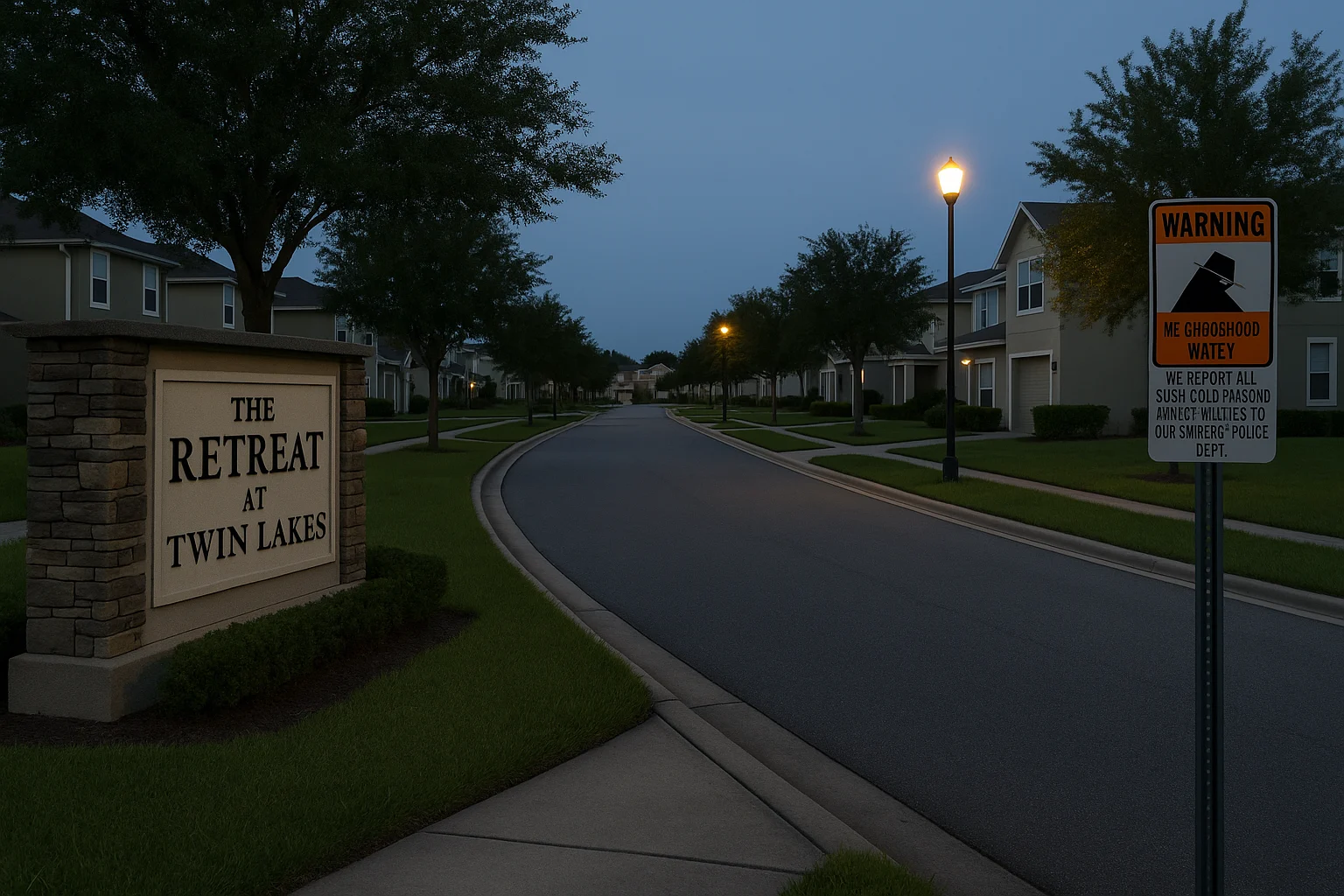
The Killing of Trayvon Martin
by: The Calamity Calendar Team
February 26, 2012
A Muffled Evening in Sanford
The sun had set on the Retreat at Twin Lakes, a gated oasis in Sanford, Florida, casting an eerie calm over the neighborhood. It was a typical late winter evening, marked by the quiet tempo of suburban life. But that familiar tranquility was about to fracture, giving way to a series of events that would echo nationwide. At the center of this storm was Trayvon Martin, a 17-year-old on a walk back from a convenience store, with his manhood still forming in the crucible of adolescence.
Setting the Stage
Trayvon was in Sanford temporarily, visiting his father’s fiancée. The neighborhood, meanwhile, was on edge. In the months prior, a spate of break-ins had stirred unease among the residents, pushing security concerns to a fever pitch. Against this backdrop stood George Zimmerman, the community’s watch coordinator. His role was to be the eyes and ears for law enforcement — a sentinel of sorts.
It was this sense of duty, perhaps amplified by recent crimes, that drew Zimmerman’s attention to Trayvon. A series of benign choices by the young man — his hoodie, his slow walking pace — in Zimmerman’s mind, sparked suspicion. And so the call was made.
A Call, a Pursuit, a Tragic Confrontation
7:09 PM: Zimmerman dialed the non-emergency police line. “We’ve had some break-ins in my neighborhood, and there’s a real suspicious guy,” he reported, detailing Trayvon’s movements with the calm precision of a man convinced he was doing the right thing.
7:12 PM: Ignoring the dispatcher’s suggestion to refrain from pursuit, Zimmerman left his vehicle. These seconds of choice and defiance, when he stepped from car to pavement, would become one of the night’s critical beats.
7:16 PM to 7:17 PM: Chaos soon erupted as neighbors called 911, reporting the sounds of a struggle and cries for help. In those frantic moments, a gunshot echoed, and then there was silence. When the police arrived, Trayvon Martin lay lifeless on the cold ground of a nameless sidewalk.
Thanks for subscribing!
Reverberations of a Single Gunshot
Trayvon Martin’s death reverberated far beyond the confines of the community gates. The local police initially stepped back, determining that no charges would be filed against Zimmerman. Their rationale drew from laws designed to protect self-defense. But this decision ignited a fuse of public outrage and called into question the very nature and application of such laws, painting a broader mural of racial tension and systemic inequity.
Widespread protests erupted across the nation, driven by a collective cry for justice and clarity in a world where neither was easily found. Trayvon’s name became a symbol in a larger narrative about racial profiling and the value of black lives in America.
The Quest for Justice: Courtroom Drama
The U.S. Justice Department and FBI opened investigations into the circumstances of Trayvon’s death under a sharply focused national lens. On April 11, 2012, after public uproar and critical examination, George Zimmerman was charged with second-degree murder. His trial began on June 10, 2013, enveloped in an atmosphere of anticipation and tension.
As the drama unfolded in the courtroom, the world bore witness to a recounting and wrestling with facts: Zimmerman's defense of self-preservation, testimonies from witnesses offering fragmented pieces of perspective, and advocates framing Trayvon’s youth against a backdrop of societal prejudice.
The verdict, delivered on July 13, 2013, was one of acquittal. It did not mark the end, but rather a continuation of the dialogue on race and justice.
Shadows of Change
In the turbulent aftermath, the killing of Trayvon Martin galvanized the birth of the #BlackLivesMatter movement. This act of unity and defiance against racial injustice became a rallying cry, with Trayvon’s story at its heart. The movement demanded hard conversations about race relations, systemic inequalities, and the laws meant to protect.
George Zimmerman’s trial and acquittal cast long shadows, prompting local and national lawmakers to reconsider the balance — or imbalance — of self-defense laws like Stand Your Ground. Yet, for all the fiery debates and burgeoning movements, a community, a nation even, was left grappling with profound loss and lingering questions.
Looking Back: A Catalyst for Change
Over a decade since that fateful February evening, Trayvon Martin's story remains deeply embedded within America's social consciousness. It serves as a powerful reminder of the unfinished business of racial equity and justice reform.
Journalists, authors, and filmmakers continue to explore Trayvon's legacy, bringing his story to new audiences who may not yet know how one young man’s tragic death set the scene for a broader, ongoing journey toward understanding and change. Trayvon Martin never asked to become a symbol, yet his life, abruptly cut short, has echoed across the intervening years, compelling us all to look critically at who we are and who we aspire to be.
Stay in the Loop!
Become a Calamity Insider and get exclusive Calamity Calendar updates delivered straight to your inbox.
Thanks! You're now subscribed.